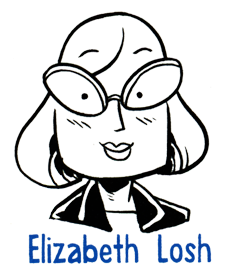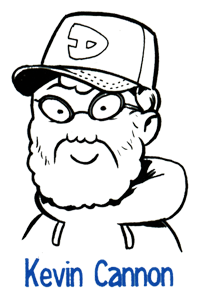
As a longtime lover of comics and graphic novels, I was excited to get my hands on a copy of Understanding Rhetoric. Yet my excitement was tempered by a stubborn, skeptical belief that the medium did not lend itself to in-depth, academic discourse. For me, comics were a literary form, not a pedagogical tool. Yet, despite my skepticism, I found myself both intellectually and creatively engaged in the material within the first few pages of the introduction. One rhetorical turn the authors take is to refer to chapters as “issues,” harkening back to how many graphic novels started as a series of comic book issues. The textbook is organized into eight issues: “Spaces for Writing,” “Why Rhetoric,” “Strategic Reading,” “Writing Identities,” “Argument Beyond Pro and Con,” “Research: More than Detective Work,” “Rethinking Revision,” and “Going Public.” The structure of the textbook leads a writing student along a well-constructed pedagogical path from topic introduction through future possibilities of media. Each issue provides information on a series of related topics, followed by a review the authors call “reframing”, and then offers exercises in the form of “drawing conclusions.”

 The main characters are cartoon representations (toons) of the authors and artists of the book. Liz, Jonathan, Kevin, and Zander toons all break the fourth wall: They know they are toons, they know they are representations of real selves who are creating the novel, and they speak directly to the reader as if to include us on the joke that cartoons are teaching real people. There are also a host of secondary characters, most of whom do not interact with the reader beyond the fourth wall, and who help Liz and Jonathan present topics, provide reviews, or clarify information.
The main characters are cartoon representations (toons) of the authors and artists of the book. Liz, Jonathan, Kevin, and Zander toons all break the fourth wall: They know they are toons, they know they are representations of real selves who are creating the novel, and they speak directly to the reader as if to include us on the joke that cartoons are teaching real people. There are also a host of secondary characters, most of whom do not interact with the reader beyond the fourth wall, and who help Liz and Jonathan present topics, provide reviews, or clarify information.

 The review sections, reframes, are examples of how to use or approach the information provided in each chapter. The characters of the reframes are Luis and Cindy, typical college freshmen, and Carol, Cindy’s mother and a nontraditional college student. All three characters are taking a course on writing, and all three courses utilize this graphic-novel textbook in the class. Interestingly, each of the students have different teachers and slightly different course requirements, which crop up through the issues to further the reader’s understanding and application of the material.
The review sections, reframes, are examples of how to use or approach the information provided in each chapter. The characters of the reframes are Luis and Cindy, typical college freshmen, and Carol, Cindy’s mother and a nontraditional college student. All three characters are taking a course on writing, and all three courses utilize this graphic-novel textbook in the class. Interestingly, each of the students have different teachers and slightly different course requirements, which crop up through the issues to further the reader’s understanding and application of the material.